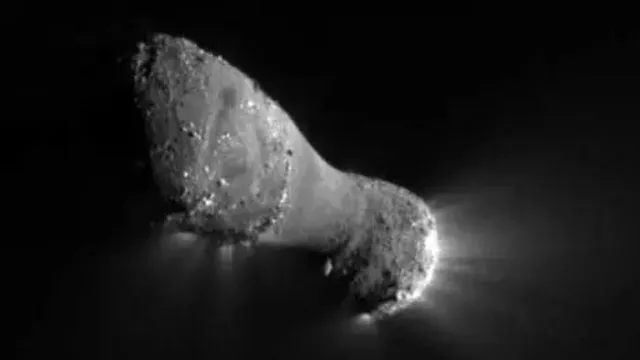- By Supratik Das
- Sun, 13 Jul 2025 01:21 PM (IST)
- Source:JND
In a stunning discovery, scientists at the University of Oxford have discovered that the cryptic object, initially seen on July 1, is "very likely the oldest comet ever recorded." The interstellar comet, designated as 3I/ATLAS, is potentially 7 billion years old at least 3 billion years older than our solar system, scientists stated. Detected by the ATLAS survey telescope in Chile, 3I/ATLAS is the third known interstellar object to have moved through the solar system, following historic observations of 1I/'Oumuamua in 2017 and 2I/Borisov in 2019. Unlike its ancestors, however, 3I/ATLAS still seems to have maintained a notable amount of volatile material, including ice and dust. This enables scientists to see its bright coma and tail, providing rare insight into ancient cosmic matter.
Much Older Than Halley's Comet
"All other non-interstellar comets like Halley's Comet were created roughly at the same time as our solar system,4.5 billion years ago," University of Oxford astronomer Matthew Hopkins stated. "But from our analysis, there is a two-thirds probability that 3I/ATLAS is older than the solar system itself," he added. The hyperbolic path of the object guarantees it is not from our solar neighborhood, setting it apart from long-period comets in general.
Scientists assume 3I/ATLAS likely originates from the Milky Way's thick disk — the area inhabited by old stars above and below the thin plane of the galaxy. "Here is an object from a region of the galaxy we have never had up close before," added astrophysicist Chris Lintott, also based at Oxford. He noted that the comet had wandered through interstellar space for billions of years prior to its recent passage through our solar system.
ALSO READ: What Are The Things You Cannot Do Normally In Space? Crying, Burping And More
Too Far Away for Naked-Eye Observation
When it was first spotted, the ancient comet was around 670 million kilometres from the Sun, around the same distance as Jupiter is from our planet. Now, 3I/ATLAS can only be seen using sophisticated telescopes, the BBC said. Astronomers are now scrambling to observe the rare interstellar visitor before it vanishes once more into the galaxy's outer reaches, potentially revealing secrets of the early Milky Way and the formation of planetary systems.

